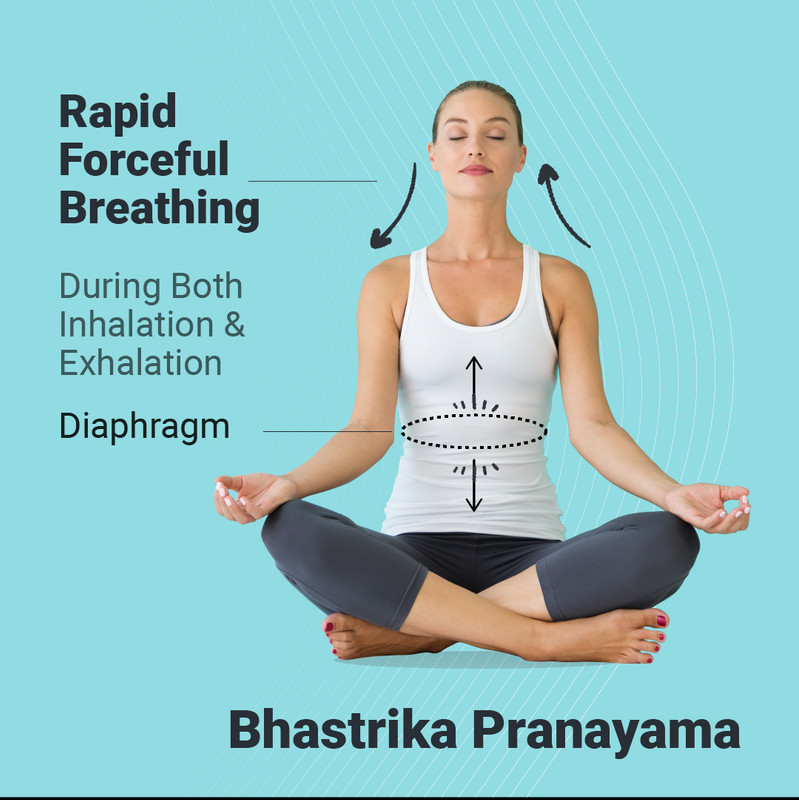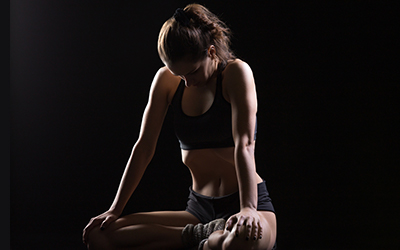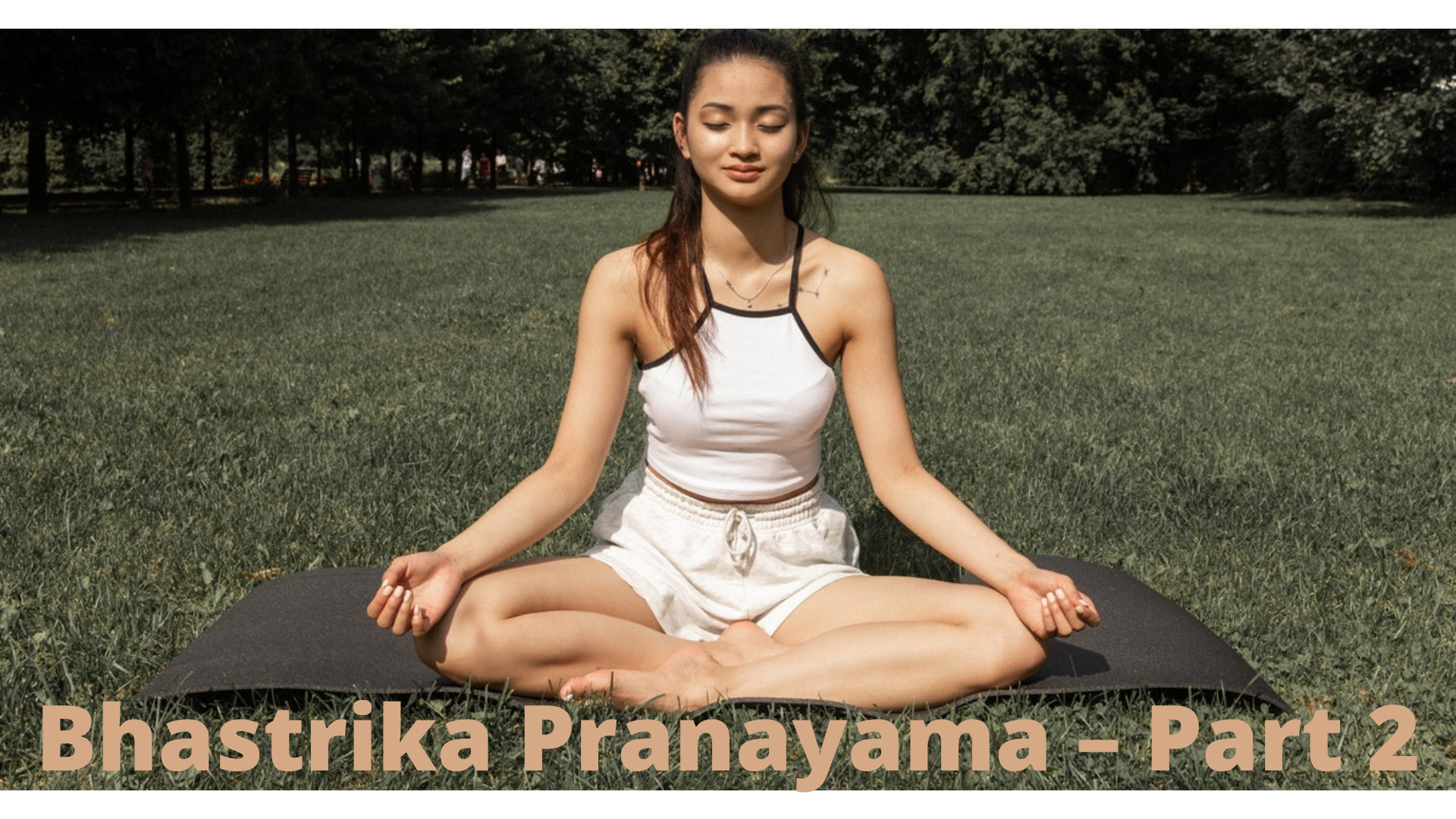In the previous article, we have talked about the benefits of Bhastrika Pranayama and its mention in the scripture. In this post, we will tackle the correct method to perform this practice.
It is vital to first prepare the body before bhastrika pranayama can be performed exhaustively. Bhastrika is a strong practice and requires a very gradual approach towards its intensity and increase in rounds. Practicing 100 to 200 rounds at the beginning alone can be very detrimental to health. Therefore, don’t skip the basic technique before jumping ahead in your journey.
Procedure
Practice Note
- Bhastrika should be done gently and not with excessive force, the nostrils should not get sucked in with the inhalation.
- The air should create a sound as it passes through the nostrils, but this sound should not be a heavy sound. Also, the sound should come from the nose and not the throat.
- Make sure that both your nostrils are clear before you start the practice. To clear the nostrils, you can practice neti under teacher’s guidance.
- Your body should not jerk during the practice. Shoulders and chest should not move at all during the practice. Only the lungs, diaphragm and the chest should move.

Beginner Method
- Sit in a comfortable meditative posture, preferably in padmasana or siddhasana/siddha yoni asana. You can also sit on a chair, but make sure your head is erect and your spine is straight.
- Place your hands on your knees and then close your eyes.
- Inhale a slow deep breath (diaphragm relaxes and your abdomen moves out) then breath out quickly and forcefully through the nose (abdomen moves in). Don’t over-exert yourself.
- Immediately after exhaling, breathe in with the same force.
- Keep practicing in this manner for 10 breaths. At the end of 10 breaths take a deep breath in and slowly exhale, relaxing yourself.
- This makes 1 round.
Duration
Practice 3 to 5 rounds. As you gain experience in this practice, slowly increase the speed of inhaling and exhaling. But make sure that inhale and exhale are of equal length. After 15 to 30 days of practicing this beginner method, move to the next technique.
Advance Method
Stage 1
- Sit in a comfortable meditative posture, preferably in padmasana or siddhasana/siddha yoni asana. You can also sit on a chair, but make sure your head is erect and your spine is straight.
- With your thumb, close your right nostril.
- Inhale deeply and slowly from your left nostril (diaphragm relaxes and your abdomen moves out), now exhale and inhale in and out as described in the preparation step (from step 3 onwards). Count till 15 to 20 breaths.
- After completing your last exhalation, breath in slowly and close both your nostrils. Bend your head forward and apply jalandhara bandha. Hold it for as long as you feel comfortable.
- Now raise your head and exhale slowly through your right nostril while keeping your left nostril closed with your ring finger. Repeat step 3 onwards but this time with your right nostril. Count till 15 to 20 breaths.
- After completing your last exhalation, breath in slowly and close both your nostrils. Bend your head forward and apply jalandhara bandha like before.
- This completes 1 round.
Duration: Perform up to 3 rounds, 15 to 20 breaths each.
As you get comfortable with the first stage, advance to the second stage. But make sure to take your time and progress slowly.
Stage 2
After exhaling through the right nostril at the end of stage 1, practice through both the nostrils together for stage 2.
Duration: Count up to 30 breaths per round. Perform 3 to 5 rounds.

Stage 3
Practice as you did in stage 2, but during the retention phase after the last exhalation, apply moola bandha and then jalandhara banda. Hold your breath as long as you feel comfortable. After that first release moola bandha and then jalandhara bandha.
Duration: 15 to 30 breaths each. Perform 3 to 5 rounds.
Stage 4
Practice as in stage 3. But inhalations from the left nostril should be 50, right nostril 50, and from both nostrils 100 each round.
Duration: 3 to 5 rounds.
Breathing Rate in Bhastrika Pranayama
Bhastrika Pranayama can be practiced at three different breathing rates according to the experience of the practitioner.
Slow Bhastrika: One breath every two seconds. No force is applied during inhalation and exhalation. It’s just like normal breathing but a little amplified. Beginners should start with this.
Medium Bhastrika: One breath per second. This is the second stage. Suitable for intermediate practitioners.
Fast Bhastrika: Two breaths per second. It is suitable for intermediate and advanced practitioners.
Rate of Progression
Abdominal muscles become stronger as one practices this regularly. Therefore, the rate of progression can be increased as follows:
- In the first month increase it by 5 breaths from the initial count of 10 breaths per round.
- In the next month increase it by 10 breaths.
- The maximum that can be increased is 40 breaths per round (in the case of alternate nostril practice also, 40 breaths each nostril).
- It is advised higher numbers should only be done under the guidance of a teacher. Therefore, start with the very least number (10 breaths each round) and you can still achieve therapuetic benefits.
Precautions Bhastrika Pranayama
- Avoid exerting excessive force during the practice. Respiration should not be violent, there should be no facial contortions and the body should not shake.
- A slow approach to the practice should be preferred.
- Bhastrika involves large amount of energy expenditure and can get tiring very quickly. A beginner should take rest after each round.
- People with the following health conditions should avoid this practice, or should do it under the guidance of yoga inspector.
- High blood pressure
- Heart disease
- Stroke
- Hernia
- Gastric ulcer
- Vertigo
- Epilepsy
- Asthma
- Tuberculosis
- Chronic bronchitis
Warnings
- If there are signs of faintness or vomiting sensation, then immediately stop the practice for a couple of days. You might be doing it incorrectly. Also, reduce the number of rounds and the force exerted.
- Fast Bhastrika should be practiced only under the guidance of yoga expert.
References
- Book: Hatha Yoga Pradipika commentary by Swami Muktabodhananda
- Book: Light on Pranayama by B.K.S Iyengar
- Book: Hatha Yoga – The report of a personal experience, by Theos Bernard
- Book: The science Of Pranayama by Sri Sivananda

3 thoughts on “Bhastrika Pranayama – Procedure, Precautions, Warnings”